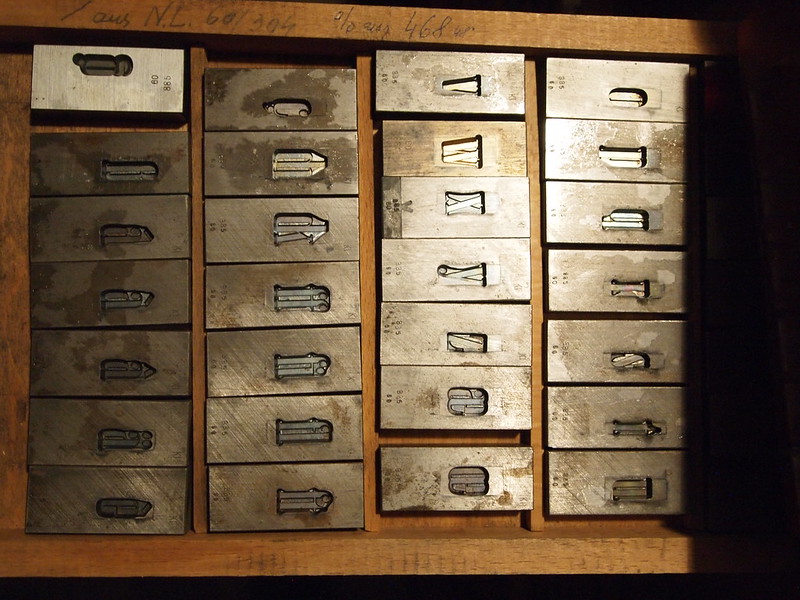A recent visit to the Gerstenberg type foundry let me finally wrap my head around the different methods of making matrices for foundry type, and how to distinguish them:
Striking a punch into copper
This is the traditional method mostly used in conjunction with hand-cut steel punches, later only used for smaller sizes until ±28pt; larger sizes are hard to strike totally level. Also, the larger the size, the more the copper block gets deformed from the extrusion of the material.
Stamping a matrix with a machine
Often done in conjunction with machine-cut punches, especially for the production of Linotype and Monotype matrices, and for foundry type when the design is supposed to match Lino or Mono typefaces. And for sizes above 28pt. Machine-cutting of punches was also used for very small sizes that were almost impossible to do by hand, e.g. 2pt or 4pt. Stamped matrices can be made of copper, steel, or other alloys.
Electrotyping matrices
Widely used in Europe in the 20th century. Usually applied in conjunction with the cutting of patrices (cutting “punches” into soft type metal alloy, called Zeugschnitt in German), mostly done for sizes from ±28pt up. The model gets placed into a galvanic solution for 24–60 hours, or longer, to produce the matrix layer. These forms, cut up, make up the “eye” of the matrix, which is filled out with zinc, tin, or brass, later also steel or other alloys. Material for the matrix-part was copper, nickel, or brass, with copper being less durable for use in the complete caster (also a reason why the traditional method was not much used in the 20th century) but the fastest to grow matrix-layers with.
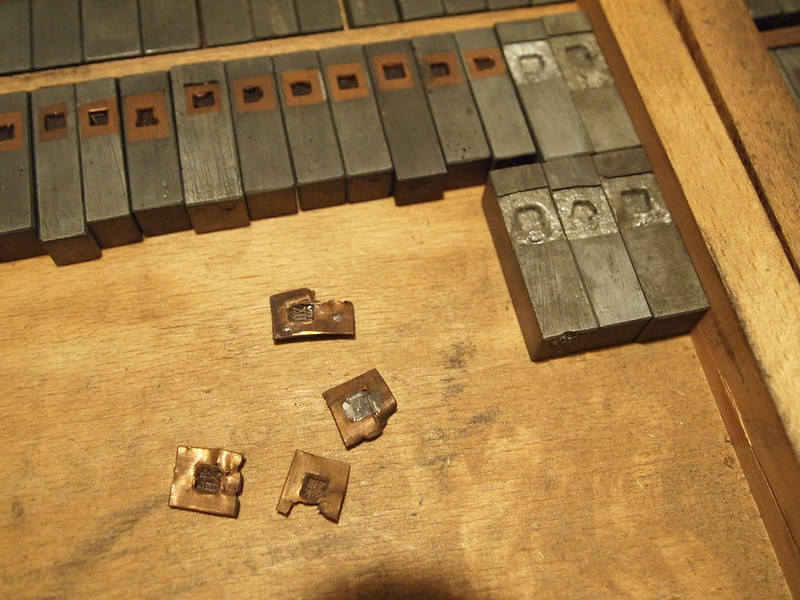
These electrotyped copper matrix-eyes came loose from their “bodies”, presumably a zinc alloy. Copper does not bind well with zinc and has to be tinned at the backside.
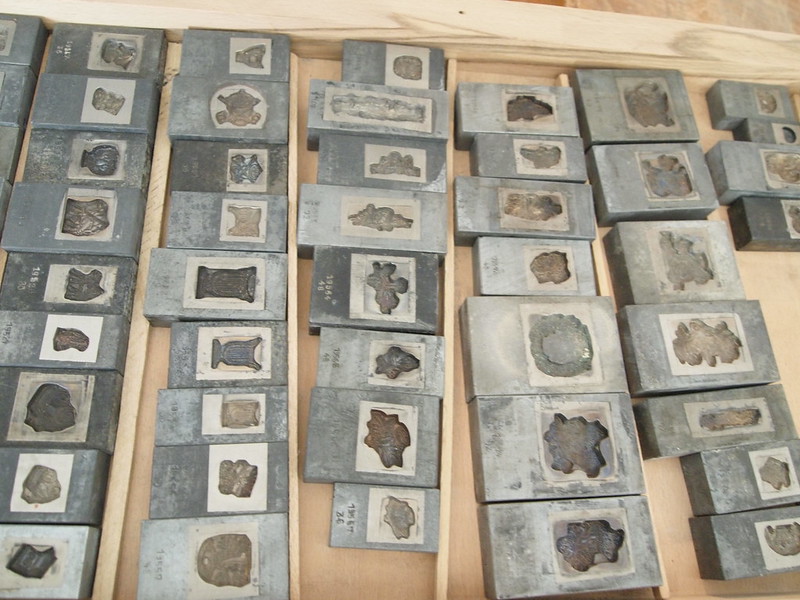
Electrotyped ornament matrices
Cutting matrices for poster type
Type larger than 96pt was usually produced in wood or resin, because metal type gets very heavy and “material-intensive” at large sizes. Still, large-sized matrices can be made via a patrix (type metal or wood) and electrotyping, or by cutting the form out of 3–4 mm thick copper sheets and mounting these on thicker sheets. Alternatively, a cut-out brass form can be pressed into type metal to form a (pretty soft, so not very durable) matrix. Or you could go all old-school and make a sand mold, preferably using beer to moisten the sand, more sticky.
Machine-engraving matrices from patterns
Widely used in Europe in the 20th century. A pantographic milling machine, adjustable for different sizes, engraves the matrix in several step following a pattern. The material used is sometimes bronze, later usually (high speed) steel. Getting an even, plane bottom was hard to achieve in the beginning, so engraving was occasionally combined with galvanic methods, but especially for scripts or other typefaces with large overhangs and kerns because those matrices had to be deeper.
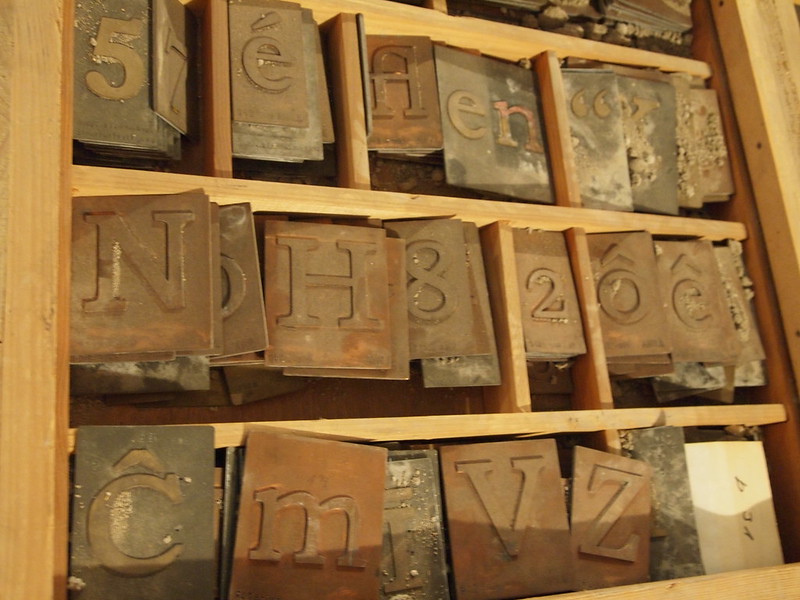
Patterns from Stempel for pantographic matrix engraving
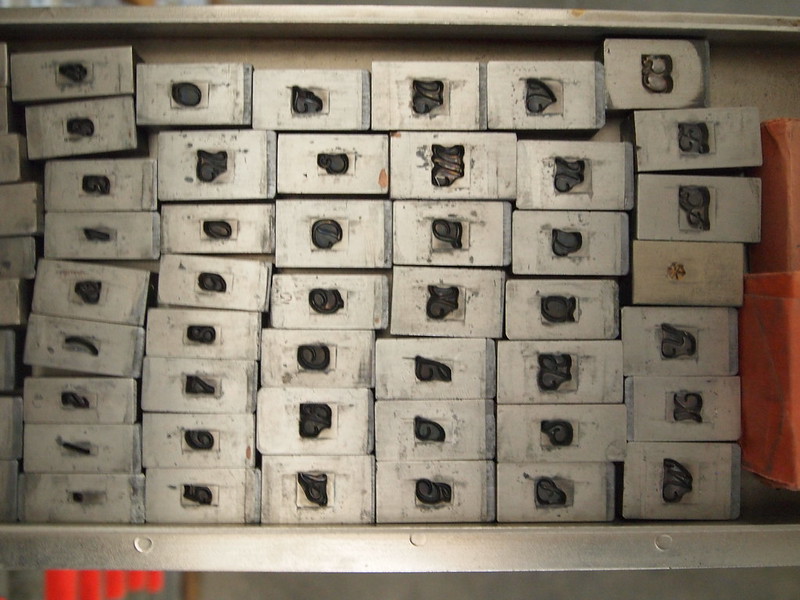
Engraved matrices (above Calipso from Nebiolo, especially for Florian and Isabella 🙂
